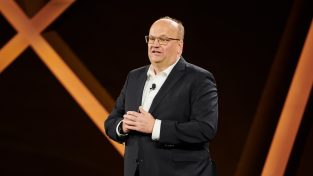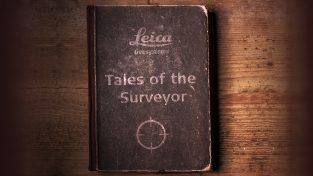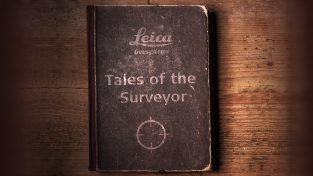In this episode of HxGN Radio, we sat down with students from Oregon State University’s Civil Engineering Geomatics programme to explore the changes that are occurring in the surveying profession as the next generation start to enter the workforce.
CG: Hello and thank you for joining us for this episode of HxGN Radio. I’m your host Christine Grahl. In today’s podcast, we’re exploring the changes that are occurring in the surveying profession, as the next generation, the digital natives, start to enter the workforce.
Joining me today are our guests, Andrew Senogles, who is a Ph.D. student in the Civil Engineering Geomatics programme at Oregon State University, and William Ohene, who is a master’s student in the Geomatics programme at Oregon State.
Thank you for speaking with us today.
WO: Thank you.
AS: Thank you for having us.
CG: So, Andrew, let me start with you. Why did you decide to study geomatics engineering?
AS: I originally got my undergraduate degree in geology, and I was introduced during that programme into doing some laser-scanning monitoring of sea cliffs. So, that really interested me and kind of piqued my interest, and I was fascinated with the prospects of the technology for deformation monitoring other things. And then that led me to pursue doing that further.
CG: William, what about you?
WO: Yeah. So, mine is different. I stumbled into geomatic engineering. So, I just knew it was a field that didn’t require me to be in the office all the time. And I had a couple of fieldwork to do. And it was around areas I was interested in working in. So, construction, mining and those other fields. So, mine, I just stumbled into the profession and I’m glad I did.
CG: What do you like best about the programme at Oregon State University? And William, I know as a master’s student, you are also teaching undergraduate students right now. So, maybe from your perspective, what you like best about being in the master’s programme, and what you like about teaching.
WO: Teaching is something I discovered I’m recently good at because I started teaching these undergrads. So, when I was working, I used to work in construction. And when I was working my subordinates always used to tell me, “No, William. You’re not a good teacher. You just show us. You don’t have the patience to be a teacher,” and all that. But then I realised that was not true when I began studies at OSU. And I think I may even pursue teaching geomatics further down the line.
With the master’s programme, you have hands on. So, we get to learn not just the traditional surveying, but then we get to look at the software aspect of it as well. So, for example, last term there was a course I took on digital terrain modelling, where we had to write up a code on how to even do the terrain modelling itself. So, it’s interesting. Not just traditional surveying, but then doing software programming based on all these things as well.
CG: And Andrew, I know you’re involved in a lot of research. What are you enjoying about that programme right now?
AS: I think the research, specifically, I enjoy, that there’s a large practical aspect. So, we do a lot of work with the Oregon Department of Transportation. A lot of like application-specific things. So, taking some of the geomatics technologies and then applying them to different problems they have, whether that be trying to do inventory checking on their retro-reflective strips or whether that be monitoring some of the landslides or rock falls that we have in Oregon. Oregon’s a very mountainous state. You also have Highway 101 runs right across the coast. So, from a research point of view, that is the most part, that I think is the best of our programme.
CG: What brought you to Oregon State to do your Ph.D. research?
AS: I primarily came to Oregon State because of one of the faculty members at Oregon State. So, I was in contact with Professor Olsen during my undergrad. And then, just talking to him and then talking to some of the other professors at other schools. He was very in depth. We had lots of conversations on Skype. He was very reassuring. He had projects for me to work on. It seemed like I wasn’t just going to be coming as another student. I wasn’t just like another number in the pipe. I was actually going to get to do stuff and he was going to help me with that. So, that was one of the big reasons why I came to Oregon State.
CG: William, what was it that brought you to Oregon State?
WO: Traditionally I’m from Ghana and the technology in Ghana is not advanced as in the U.S. So, I was doing more traditional stuff and it got very repetitive and very boring. And I felt the need to upgrade. And Oregon has one of the good geomatic programmes in the U.S. I looked out for a couple of them. There were not many. And Oregon was one of the top schools in the geomatics programme.
CG: William, let me start with you on this question. What do you think are the biggest opportunities for professionals who get a geomatics engineering degree or in your case a master’s degree? What are you most looking forward to doing with your degree?
WO: I think we find ourselves in a great time, because technology is advancing and the digitalisation of a lot of things are going on. It’s on the up rise. So, combining these technologies to help and solve problems in society … Because that’s the major thing with geomatics. We solve problems a lot. Even if it’s just construction or just mining, even though we do our work, we are one of the major solution contributors. So, like Andrew rightly said, he’s monitoring coastal erosion. And we are trying to monitor and produce solutions. So, the advancement in technology coupled with the entire geomatics culture of promoting solutions, it goes hand in hand, and it gives that reciprocity. And I think it’s a great opportunity for us now as young surveyors.
CG: And Andrew, what do you plan to do with your Ph.D.? Will you stay in research? Will you teach? Maybe a little bit of both?
AS: No. So, I think I’m primarily interested in going into industry and seeing if I can take some of the work that we’ve done and help create new products. I think, fundamentally, geomatics is a tool, and combining it with other tools can really lead to some special stuff. So, I think William hinted to this a little bit in the coursework, when we talked about the coursework, was doing some of the software stuff too. So, I also work a lot in software. And I think having that background in geomatics and then also having the knowledge of working in software engineering, combining those can help create stuff that I think is a unique skill set that I don’t think necessarily everyone has.
CG: What technologies or applications most interest you right now?
AS: So, I think, right now, I really like positioning, navigation, and then also real-time. They’re, I guess, separate parts. But positioning and navigation interests me. So, a lot of the autonomous robotic applications are pretty fascinating, using those for mapping. So, when we were at the HxGN LIVE recently, we got to see the Boston Dynamics’ robotics equipment with the BLK scanner and that was really, really cool to watch. Also, some of the deformation monitoring in real-time. So, taking some survey equipment and GNSS, total stations, and then applying that on landslides and bridges and other structures and stuff like that can be really fascinating.
CG: William, what about you? What are you most interested in right now, in terms of either technology or the applications, where you see things going?
WO: Yeah, I think he rightly hinted on most of them. So, I’m just going to maybe mention one area, which … It’s my current area of research. So, automating processes, traditional processes, that take time. So, for example, we moved from the single, traditional base rover system, and we moved to the real-time network. And now, adjusting a real-time network is done manually and then automating such a process is the next step. And those are the things I’m interested in. So, automating very traditional ways of doing old surveys and all that, as an addition to what Andrew said.
CG: What do you hope to contribute as a professional? You’re earning your master’s degree right now. Where do you hope to take that and apply it? What do you hope to contribute?
WO: As a follow-up to what I just said, I hope to help in automating a lot of stuff in the industry because sometimes when things are very repetitive, it’s more prone to errors. So, automating these things with the advancement in technology and computing power and all those things, being able to automate helps the industry a lot.
CG: And what about you, Andrew? Is there something that you’re looking forward to applying what you’re learning right now?
AS: Yeah. So, I think, again, going back to when we were at HxGN LIVE, a big theme of the conference was on using Hexagon’s solutions and other solutions to provide autonomous solutions to various challenges. And I think it’s important for people with a background in geomatics to play a role in that, both from the design process—we need to have a seat at the table—as well as having a role in how we’re going to use that, because it’s one thing to develop those things, but how are we going to then use them?
CG: What most excites you when you think about the future?
AS: I guess, very big picture, I think bringing geomatics into space would be really cool. How far that will get in my lifetime, I guess we’ll find out.
CG: What about you, William? What excites you the most as you think about the future and the possibilities?
WO: I think just technology advancement and pushing solutions to problems we have in the society and the role geomatics can play a part in. So, for example, smart cities. We get in the very old buildings that don’t have BIM models. You probably need to do a scan to a BIM. So, geomatics has a role in the advancements of technology further down the line. So, yeah. It’s pretty exciting to be a geomatic engineer in these times.
CG: We appreciate your time today. Thank you for joining us.
To our listeners, you can learn more and tune in to more HxGN Radio episodes on iTunes, Spotify or SoundCloud. Or visit hxgnspotlight.com for more stories from Hexagon. Thank you for listening.
















